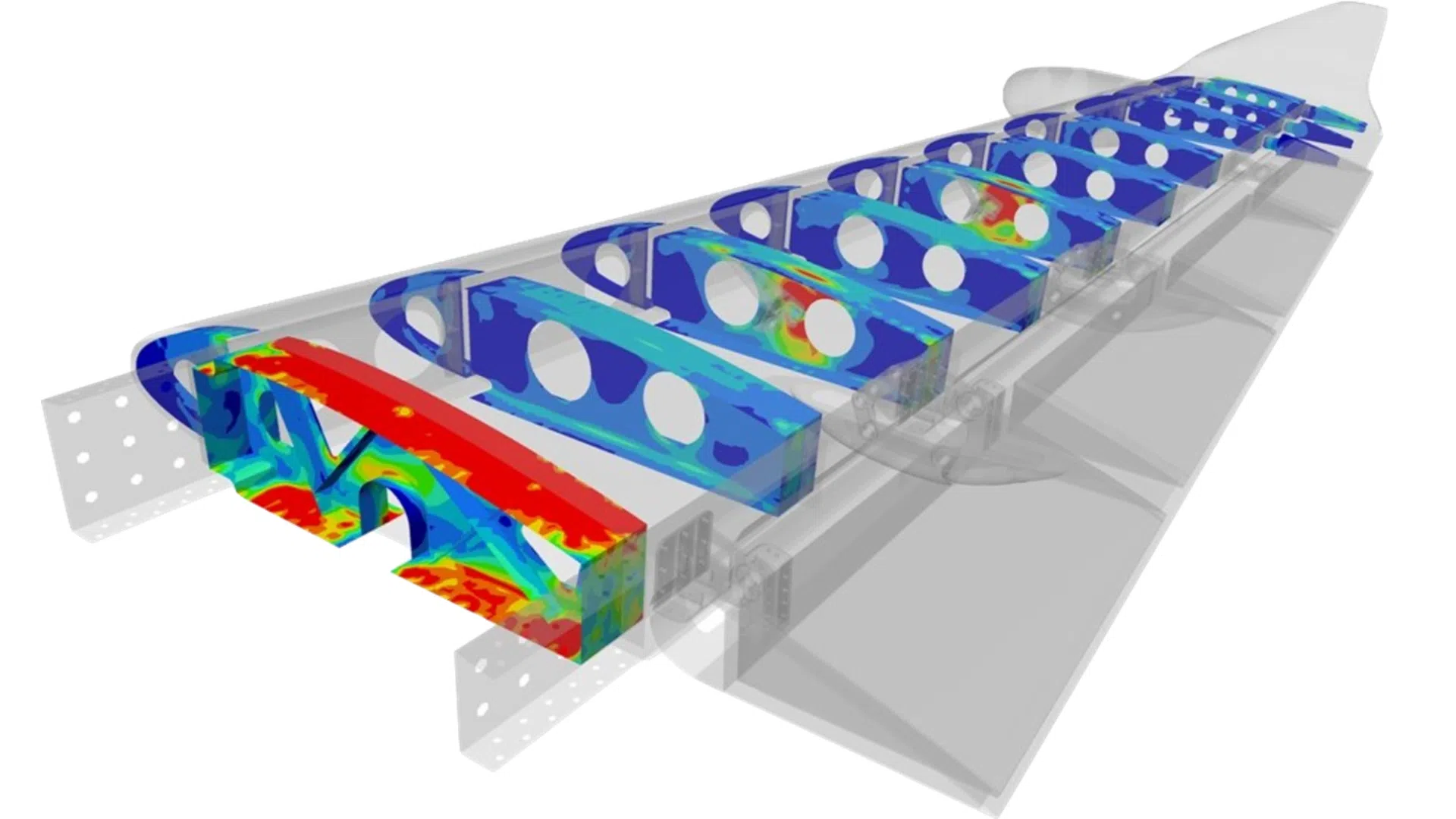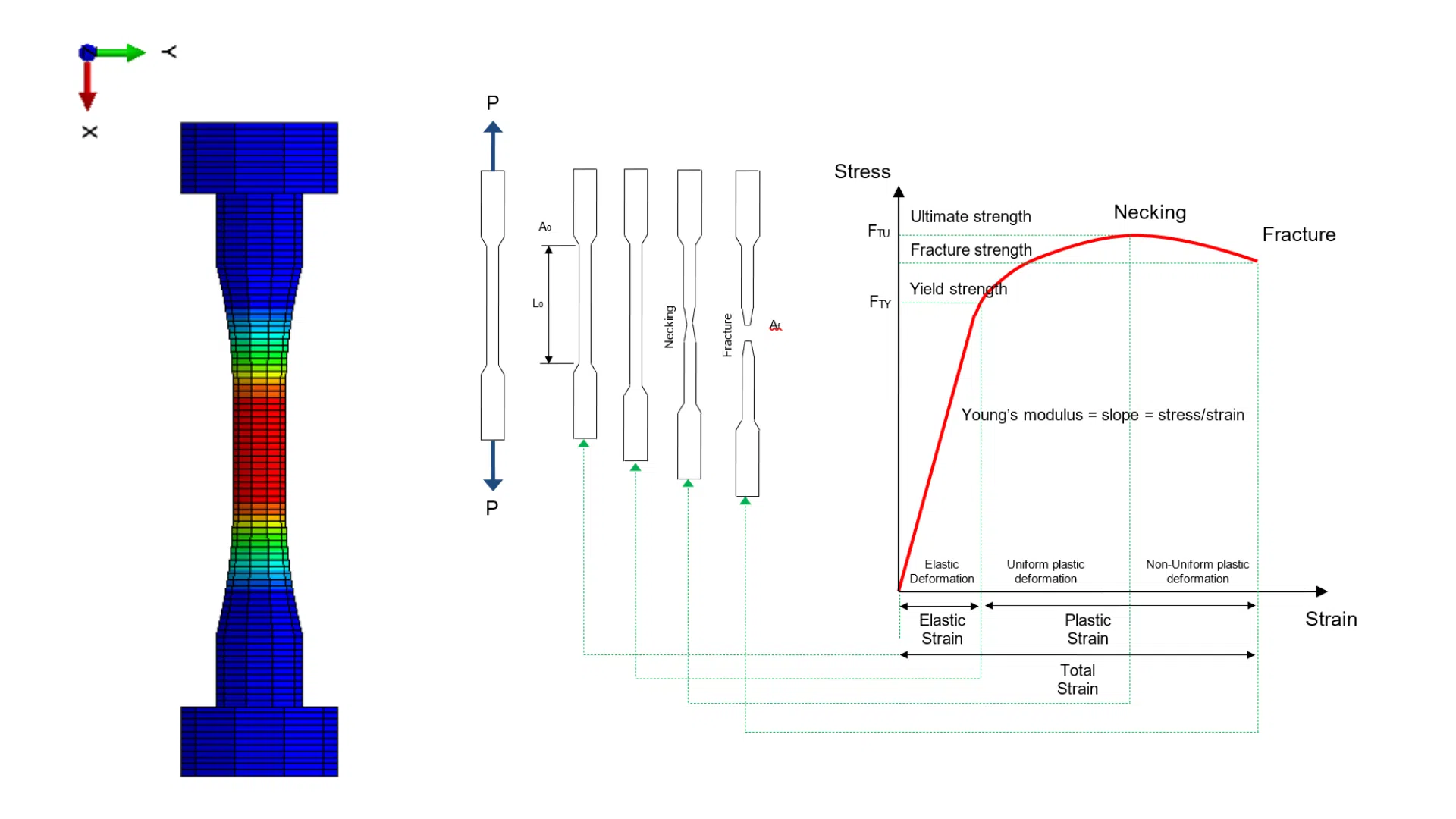In this post on Computational Fluid Dynamics (CFD) we are going to perform a common benchmark of CFD analysis, the study of inverted flow after a step. It reflects the importance of choosing the right turbulence model in CFD simulations.
We will use the Acusolve software with the Hyperworks CFD pre-processor. This study also has a tutorial available in our Downloads section where the steps to follow are detailed.
In this example we will not study the heat transfer, but focus on the velocity field and especially on the extent of the reversed flow zone after the step. We will compare the results of two turbulence models suitable for this situation, the K-omega model and the SST (Shear Stress Transport).
Pre-processing with Hyperworks CFD
The geometry and conditions of the case can be seen in the following image:

In order to simulate the case with Acusolve, this domain is given a thickness of 0.1mm to achieve a three-dimensional geometry. As boundary conditions, in addition to the inlet and outlet in the indicated positions, symmetry conditions are imposed on the lateral faces and no-slip wall conditions on the rest of the boundaries, including the step.
For the meshing we define an overall average element size of 0.1mm and refine the lower part, including the step completely, with an element size of 0.01mm. The image shows a detail of the meshing in the step area together with the Hyperworks meshing summary.

Resolution and Post-processing
After simulating the model in both proposed cases, we can see the velocity results, and with them the reverse flow zone predicted by the analysis. It can be seen that the SST model predicts a larger recirculation zone.

The choice of turbulence model also influences the convergence, which for this simulation is faster and clearer with K-Omega activated.
Turbulence Model
Finally, here are some general recommendations for the use of turbulence models in order to choose the right one for a CFD analysis:
- Spalart-Allmaras: Designed for aerospace applications. Good efficiency and convergence. Limitations and possible high errors in three-dimensional or complex flows.
- K-Epsilon: Good ratio between accuracy and speed. More accurate for flow away from walls. It has three variants:
- Standard: Convergence problems if the walls have too much influence on the problem or high curvature.
- Realizable: Recommended choice for many applications. Lower accuracy near walls.
- RNG: Best for complex flows with low turbulence. Worse convergence.
- K-Omega: Best description of the flow close to the walls. Useful when walls are of great importance in the flow. Worse results far from surfaces. Poor convergence in some cases and very dependent on initial conditions. Not highly recommended for common industrial problems.
- SST: Combines K-Omega model near the walls with transition to K-Epsilon in the far zones. Useful in heat transfer problems with convection. Good accuracy but may have convergence problems.
- LES (In Acusolve only available for transient analysis): More complex model. Useful in cases of slow flow with significant thermal component and buoyancy.


